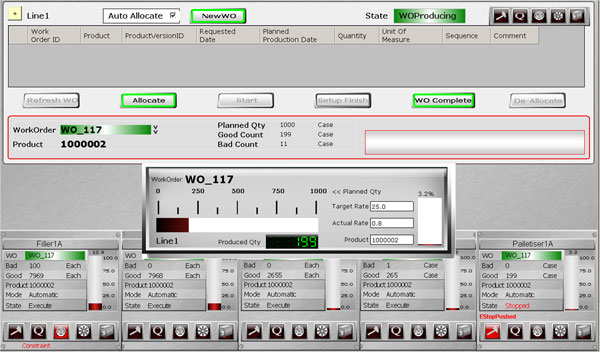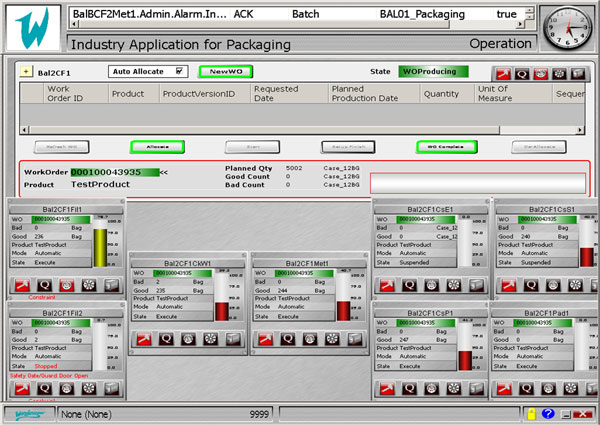This article was authored by Maryanne Steidinger, who has more than 25 years of experience working for leading automation vendors in sales, MES marketing, and partner/alliance management.
Overall equipment effectiveness, or OEE, is an indicator of the sum of three production measures: uptime, quality, and throughput. By monitoring OEE, companies can find hidden capacity, what some have called uncovering the “hidden factory.” OEE gives users a better view of how, why, and when stoppages or downtime occur, even if sub-second in nature.
Setting the scene
A well-established sugar refinery, for example, discovered that its shrinking margins could be improved, not only by refining but also by extending operations into product packaging. This change in business model required them to begin reconfiguring their plants.

Their plant modernization effort included migration to a new distributed control system (DCS) and integration with the SAP enterprise resource control system. It also included a digital packaging initiative targeting both operational and systems improvements. Operations improvements included:
- Bringing visibility across the entire packaging operation
- Implementing real-time packaging performance metrics, tracking reasons and events contributing to downtime
- Using overall equipment effectiveness (OEE) techniques to manage downtime and packaging line performance and understand causes of downtime
- Measuring and controlling units of production per shift
Systems improvements included:
- Optimizing head count for effective labor management
- Mapping product requests to schedule production, thus allowing customer demands to be met
- Improving inventory management
- Establishing a “make to order” versus “make to stock” plan, further reducing inventory
To guide them in the OEE measurements required for monitoring and production improvements, the company implemented a scalable software solution for collecting, tracking, and communicating real-time equipment performance and efficiency information, from machine/equipment level information to line to plant enterprise business systems. The company had already established standard rates for production and found them highly compatible with OEE performance software.
Roll out
The sugar refinery addressed both the operations and business improvements in a two-pronged OEE roll out. In the first prong, they rolled the model out to five production lines, including both powered and granulated sugar lines. The second prong included integration into the business system from the control layer. Information transfered between the business and control layer included work order and schedule downloads, uploads with quantities packaged and materials consumed, and PLC setpoints to the manufacturing execution system (MES).
Among the functionality that the MES tracked was switching bags and bundles, counting finished goods, running different machines, and machine changeovers. These variances all were built into the OEE software system as reusable software objects.
Scaling
Additional lines were added to the pilot and were enhanced to create an elaborate "state" model. The model is built on an enterprise control software platform that supports open integration; in this case, providing both a plant operating model and a runtime connection to real-time plant process control equipment. The model reflects states and events that correspond to OMAC PackML standards. It tracks and manages reason codes for stoppages, production tracking, and downtime for all packaging equipment.
If quality or performance problems, such as tearing or underfilling, occur when sugar bags are being filled, for example, the company can determine the particular reason, (e.g., an upstream feed condition,) log it, and create standard screens and reason codes to capture it in the future.
The model currently replicates close to 1,000 reason codes across 22 lines. As such, there is a high degree of granularity, with each entity on any line able to pinpoint a particular downtime event or reason specifically.
Using software to help enforce OMAC standards allows the company to align PLCs and other automation equipment with the MES layer, enabling a standardized approach to OEE, with common reason codes, downtime tracking, and so on.
The company's corporate packaging unit continues to use the original system, making pertinent changes to the automation system (PLC code) as a result of the OEE indicators. All screens are viewable from the automation control room, which in essence makes the software an integral part of their automation control strategy.


Benefits
In addition to the resulting performance improvements, the visibility provided by the OEE software helped the the engineering team overcome challenges in rolling out the application. The clarity with which it highlighted benefits, as aligned with changing business strategies, helped to find the correct sponsors and champions.
Overlaying with new product versions being introduced, multiple site management, and services talent, the software provided the infrastructure, tools, and, ultimately, visibility into the customer's processes.
This visibility has allowed the refinery to sharpen, promote, and proliferate the benefits of overall equipment effectiveness to identify their "hidden factory" for more profitability, capacity, and product output.
About the Author Maryanne Steidinger formerly was director, product marketing, operations and information, for Invensys Operations Management, responsible for the Wonderware, Avantis and SimSci-Esscor brands. She has more than 25 years of experience working for leading automation vendors in sales, MES marketing, and partner/alliance management. She holds bachelor’s and master’s degrees, respectively, in psychology and marketing management from Sonoma State University and is a past chair of MESA International.
Maryanne Steidinger formerly was director, product marketing, operations and information, for Invensys Operations Management, responsible for the Wonderware, Avantis and SimSci-Esscor brands. She has more than 25 years of experience working for leading automation vendors in sales, MES marketing, and partner/alliance management. She holds bachelor’s and master’s degrees, respectively, in psychology and marketing management from Sonoma State University and is a past chair of MESA International.
Contact with Maryanne:
A version of this article also was published at InTech magazine.



